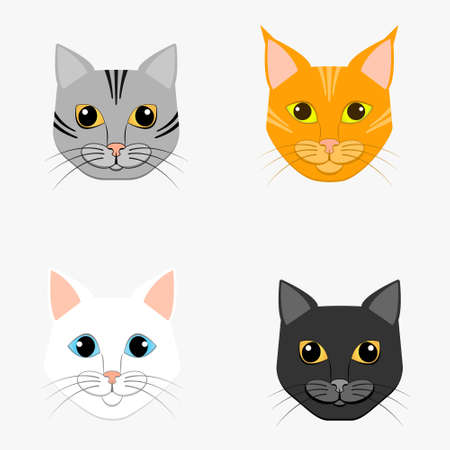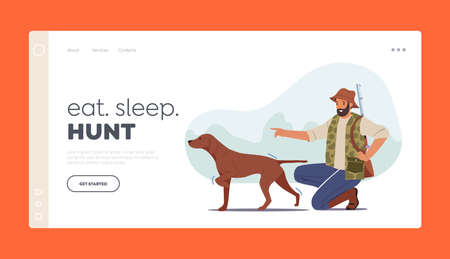1. Proper Housing and Space
Providing the right type and size of enclosure is essential to ensure the comfort and safety of small pets. Every pet has unique space requirements, and selecting an appropriate habitat helps promote their well-being.
Choosing the Right Enclosure
When selecting a home for your small pet, consider factors such as size, ventilation, materials, and accessibility. A properly sized enclosure allows them to move freely, exercise, and engage in natural behaviors.
Recommended Enclosure Sizes
Different small pets require different amounts of space. Below is a general guideline for enclosure sizes based on common small pets:
| Small Pet | Minimum Enclosure Size | Additional Considerations |
|---|---|---|
| Hamster | 24″ L x 12″ W x 12″ H | Solid flooring recommended; avoid wire-bottom cages. |
| Guinea Pig | 30″ L x 36″ W | Larger enclosures encourage exercise and socialization. |
| Rabbit | 36″ L x 48″ W | Should allow standing on hind legs without touching the top. |
| Ferret | 24″ L x 24″ W x 18″ H (per ferret) | Multi-level cages with ramps are ideal for climbing. |
| Chinchilla | 30″ L x 24″ W x 48″ H | Tall enclosures with platforms support jumping behavior. |
Enclosure Placement and Safety
The location of your pet’s habitat plays a crucial role in their overall health. Place the enclosure in a quiet area away from direct sunlight, drafts, and extreme temperatures. Ensure it is positioned securely to prevent tipping or accidental escapes.
Avoid Common Mistakes
- Crowded Spaces: Overcrowding can lead to stress and territorial behavior.
- Poor Ventilation: Enclosures should have proper airflow to prevent respiratory issues.
- Lack of Security: Ensure doors and latches are secure to prevent escapes or predator access.
- Noisy Environments: Pets need a peaceful environment to rest and feel safe.
Providing Comfort Inside the Habitat
A comfortable habitat includes soft bedding, hiding spots, and enrichment toys. Choosing the right bedding material is important for cleanliness and comfort. Some good options include:
- Paper-based bedding: Soft, absorbent, and dust-free.
- Aspen shavings: Safe for most small pets but should be changed regularly.
- Fleece liners: Washable and reusable for guinea pigs and rabbits.
- Avoid cedar or pine shavings: These can cause respiratory problems due to strong aromatic oils.
Selecting the right housing setup ensures that your small pet stays happy, healthy, and active in their environment.
2. Temperature and Climate Control
Keeping your small pet comfortable requires maintaining the right temperature, humidity, and airflow in their habitat. Different species have unique needs, so its essential to create a stable environment that supports their health.
Understanding Temperature Needs
Small pets are sensitive to temperature changes. Extreme heat or cold can cause stress and illness. Here’s a general guide for common small pets:
| Pet Type | Ideal Temperature Range (°F) |
|---|---|
| Guinea Pigs | 65-75°F |
| Rabbits | 55-70°F |
| Hamsters | 65-75°F |
| Reptiles (varies by species) | 75-85°F with basking areas up to 95°F |
Managing Humidity Levels
Humidity is just as important as temperature, especially for reptiles and amphibians. Too much moisture can cause mold growth, while too little can lead to dehydration. Use a hygrometer to monitor humidity levels and adjust as needed.
Recommended Humidity Levels for Small Pets
- Guinea Pigs & Rabbits: 40-60%
- Hamsters & Gerbils: 30-50%
- Reptiles & Amphibians: Varies by species, typically 50-80%
Ensuring Proper Ventilation
A well-ventilated habitat helps prevent respiratory issues and keeps the air fresh. Avoid placing cages in direct sunlight or drafty areas. If using an enclosure with limited airflow, consider adding small vents or a fan set on low (not directly blowing on your pet).
Tips for Climate Control
- Avoid sudden temperature changes: Keep your pet’s enclosure away from air conditioners, heaters, or open windows.
- Use heating pads or lamps: For reptiles and other heat-sensitive pets, provide a warm area in their habitat.
- Mist when necessary: If your pet requires high humidity, mist their enclosure lightly with water.
- Monitor conditions daily: Use thermometers and hygrometers to keep track of temperature and humidity levels.
By carefully managing temperature and climate control, you ensure your pet stays healthy and comfortable in their habitat.

3. Nutrition and Food Accessibility
Providing proper nutrition is essential for the overall health and well-being of small pets. A well-balanced diet ensures that they receive the necessary vitamins, minerals, and nutrients to thrive. Additionally, easy access to fresh water and appropriate food sources helps maintain their daily energy levels and prevents health issues.
Essential Nutrients for Small Pets
Different small pets have unique dietary needs based on their species. Below is a general guide to the essential nutrients required for various common small pets:
| Pet Type | Essential Diet Components |
|---|---|
| Rabbits | Fresh hay, leafy greens, limited pellets, occasional fruits |
| Guinea Pigs | Vitamin C-rich vegetables, hay, high-quality pellets |
| Hamsters | A mix of seeds, grains, fresh vegetables, occasional protein sources |
| Gerbils | Dried grains, fresh vegetables, limited fruit treats |
| Ferrets | High-protein meat-based diet, no carbohydrates or plant-based foods |
| Turtles | A mix of leafy greens, proteins (such as insects or fish), and commercial turtle pellets |
The Importance of Fresh Water
No matter the type of small pet you have, fresh and clean water should always be available. Some pets prefer water bottles over bowls to prevent contamination. Be sure to check their water supply daily and clean containers regularly to avoid bacteria buildup.
Selecting the Right Feeding Setup
The way food is presented also plays a role in ensuring your pet eats properly. Here are some tips for choosing the right feeding setup:
- Bowls vs. Dispensers: Some small pets do well with food bowls, while others benefit from automatic dispensers that regulate portions.
- Avoiding Spillage: Heavier ceramic bowls can help prevent tipping over during meals.
- Easily Accessible Placement: Place food and water in a location that is easy for your pet to reach but not prone to contamination.
- Catering to Natural Behaviors: Foraging toys or puzzle feeders can encourage mental stimulation while eating.
Avoiding Harmful Foods
Certain foods can be dangerous for small pets. Always research what is safe before introducing new items into their diet. Some common foods to avoid include:
- Chocolate and caffeine: Toxic to most small animals.
- Dairy products: Many small pets are lactose intolerant.
- Sugary or processed foods: Can lead to obesity and digestive problems.
- Certain fruits and vegetables: Onions, garlic, avocado, and citrus fruits can be harmful depending on the pet species.
The Role of Treats in a Balanced Diet
Treats should only make up a small portion of your pet’s diet. While they can be useful for training or bonding, too many treats can lead to nutritional imbalances. Stick with healthy options like dried fruits (for species that tolerate them), natural chews, or store-bought treats designed specifically for your pet type.
A well-balanced diet combined with proper food accessibility ensures that your small pet remains happy and healthy. By providing nutritious meals and a clean water source, you’re helping them live a long and fulfilling life.
4. Enrichment and Mental Stimulation
Keeping your small pet mentally stimulated is just as important as providing food and shelter. Boredom can lead to stress, destructive behaviors, and even health problems. By offering toys, exercise opportunities, and companionship, you can help your pet stay happy and engaged.
Toys for Mental Engagement
Toys play a crucial role in keeping your small pet entertained. Different pets have different preferences, so its important to choose the right type of toy based on their species and personality.
| Pet Type | Recommended Toys |
|---|---|
| Rabbits | Chew toys, tunnels, cardboard boxes |
| Hamsters | Exercise wheels, hideouts, chew sticks |
| Guinea Pigs | Tunnels, foraging toys, wooden blocks |
| Ferrets | Interactive balls, tunnels, plush toys |
Exercise Opportunities
A sedentary lifestyle can lead to obesity and other health issues in small pets. Ensuring they get enough physical activity is essential for their well-being.
- Cages with multiple levels: Adding ramps and platforms encourages movement.
- Tunnels and mazes: These provide an engaging way for pets to explore their habitat.
- Supervised playtime: Allowing pets out of their enclosures in a safe space helps them burn off energy.
- Exercise wheels: Ideal for hamsters and some other small rodents.
The Importance of Companionship
Certain small pets are highly social and thrive when they have a companion. If you have a social pet, consider adopting them in pairs or spending extra time interacting with them daily.
| Pet Type | Social Needs |
|---|---|
| Rabbits | Bonds well with other rabbits; should not be kept alone. |
| Cavies (Guinea Pigs) | Highly social; need at least one companion. |
| Hamsters | Dwarf hamsters may live together; Syrian hamsters must be housed alone. |
| Ferrets | Loves playing with other ferrets but can also bond with humans. |
Mental Stimulation Activities
You can engage your pet’s mind by introducing new challenges regularly. Here are some simple ways to keep their minds active:
- Puzzle feeders: Encourages natural foraging instincts.
- Sensory stimulation: Rotate toys, scents, or rearrange their habitat layout occasionally.
- Litter training: Some small pets enjoy learning new skills like using a litter box.
- Treat hiding games: Hide treats around their enclosure to encourage exploration.
Mental enrichment is vital for your pet’s overall happiness and well-being. By incorporating these activities into their daily routine, you can ensure they live a fulfilling and healthy life.
5. Safety and Cleanliness
Maintaining a clean and secure habitat is crucial for your small pets health and well-being. A well-kept environment helps prevent illnesses, reduces stress, and minimizes the risk of injuries. Here’s how you can ensure a safe and hygienic living space for your pet.
Keeping the Habitat Clean
Regular cleaning is essential to prevent bacteria buildup, unpleasant odors, and potential health issues. Follow these guidelines to maintain cleanliness:
| Task | Frequency |
|---|---|
| Remove uneaten food | Daily |
| Change water | Daily |
| Spot-clean bedding and litter | Daily |
| Wipe down surfaces | Weekly |
| Deep clean cage/enclosure | Bi-weekly or as needed |
| Replace bedding/litter completely | Weekly or as needed |
Ensuring a Safe Environment
A secure habitat protects your pet from accidents and injuries. Consider these safety measures:
- Avoid hazardous materials: Ensure that bedding, toys, and accessories are non-toxic and free from sharp edges.
- Proper ventilation: Choose an enclosure with adequate airflow to prevent respiratory issues.
- No escape routes: Secure all openings to prevent escapes, which could expose your pet to dangers.
- Avoid overcrowding: Ensure enough space for movement to reduce stress and territorial behavior.
- Temperature control: Keep the habitat in a stable environment away from direct sunlight, drafts, or extreme temperatures.
A Comfortable Resting Area
Your pet needs a cozy and safe resting spot for proper relaxation. Provide soft bedding made from pet-safe materials, and place their sleeping area in a quiet part of the enclosure. Avoid using scented products or harsh chemicals near their habitat to prevent respiratory irritation.
A clean and secure habitat keeps your pet happy and healthy while reducing the risk of illness or injury. By following these guidelines, you can create an ideal living space where your small pet thrives.

